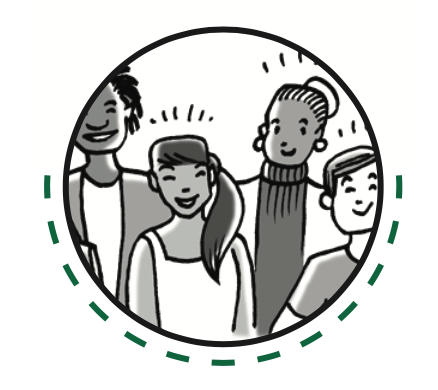Sharon Rendon, Coaching Coordinator, sharonrendon@cpm.org
Each of the standards for mathematical practice begins with the words, “Mathematically proficient students will”, not “Teachers will.” Research on effective mathematics instruction clearly articulates the need to transform secondary math classrooms from being teacher centered to more student centered. When classrooms experience this transformation it is possible that status issues may arise. While in a teacher centered classroom, there is clearly one person with the status in the room, however in a student centered classroom there may still be only a handful of people with status. If you have study teams that are primarily dominated by one student or other students choose to wait for the “smart” kids to contribute, there are status issues that must be addressed so that every student has a voice, equal status, and meaningful opportunities to consider the mathematics.
I was able to attend a session at the NCSM Annual Conference this last month in which teachers from the Delaware Mathematics Coalition shared what they have been learning about this issue of status in their student centered classrooms. Their work began by examining video clips of lessons, when they noticed that issues of status were occurring in their classrooms. Once they became aware of the issues they started working together to consider strategies and norms that would support their work in promoting more equitable learning environments in their classrooms and schools. They have been trying to incorporate six strategies that are fairly simple to implement and have shown to help improve status issues.
- Incorporate Vertical Non-Permanent Surfaces – Having teams work at the board, on whiteboard walls or reusable poster paper, promotes risk-taking and gives more opportunities for students to showcase their ideas to both peers and teacher. It also helps to build their status in a safe space; gives opportunities for inter- and intra-team collaboration and reinforces the belief that math is a social construct stemming from multiple people in the class.
- Teach students about Rough-Draft Talk (a.k.a. Exploratory Talk) – When students adjust their thinking that the first version of thinking is just an initial “rough draft” there are more opportunities for all students to add value to class and raise status. With this idea students can identify as meaningful contributors to the class and see the class as a safe space for risk-taking.
- Independent think time before team collaboration – Insisting on this time gives students opportunity to craft their own ideas to bring to the team discussion; without this time some students will cede the discussion and thinking to more vocal group members. This small amount of time gives students a chance to invest themselves in the problem, which will motivate them to share in their team.
- Randomized teams more frequently even as often as daily – When students cannot consistently rely on a “stronger” teammate an expectation is created that everyone works every day and works with all their classmates. This strategy prevents students from identifying/classifying “smart/dumb” teams and greatly reduces social status issues. It also fosters reliance on co-constructed inter- and intra-team knowledge since students are working with new teammates more often.
- Encourage Multidimensionality and Multiple Abilities – Both researchers Boaler and Cohen have articulated the importance of creating a classroom environment that celebrates multiple strengths in students. In these spaces there are additional opportunities for students to demonstrate competency while instilling a multiple abilities mindset. Students can begin to see strengths and competencies in their peers outside of traditional metrics.
- Building on student mistakes – In order to reduce the pressure on students in class, many recent studies suggest de-emphasizing the focus on always getting the right answer. Allowing for more openness of math demonstrates to low-status students that high-status students make mistakes too. This strategy helps equalize the room by communicating to all students it is okay to make mistakes, so making mistakes does not negatively impact a student’s status.
In a student centered classroom opportunities to meaningfully engage in the mathematics can be and often are powerful experiences for participating students; unfortunately, these opportunities are not being equitably accessed when high status students frequently dominate these opportunities as low-status students passively observe. Teachers need to build awareness of status issues and be intentional about creating an environment that levels the status. Start by collecting evidence of teams either by video taping or having a peer or coach collect data for part of a lesson focusing on one or two teams. Then make a plan to begin incorporating some of these strategies.
